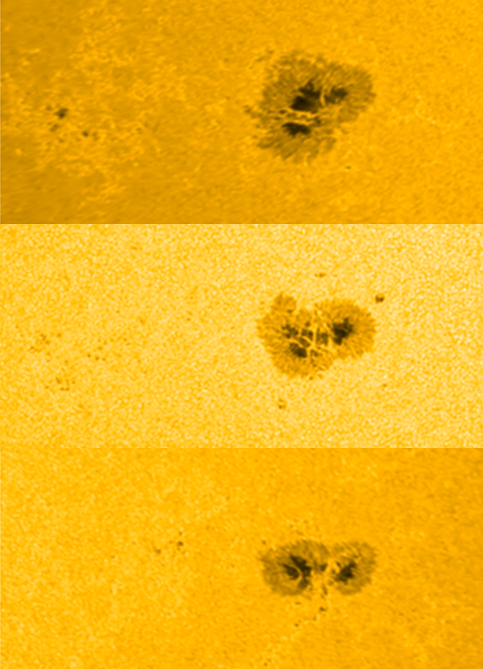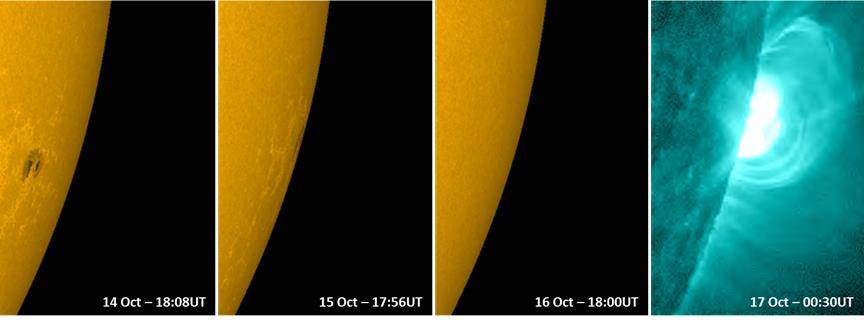NOAA 2599 transited the solar disk from 3 till 15 October. It reached its largest size around 5 October, when its area was equivalent to nearly 3 times the total surface area of the Earth. During its transit, it significantly changed from outlook, becoming smaller and less complex. Solar observers watching the Sun only at the beginning and the end of the period might even have had a hard time to conclude this was the same sunspot.
The SDO/HMI imagery underneath shows the spot on 4, 8 and 13 October. Its shape-shifting is even clearer in this movie , having an image cadence of about 1 image per half hour. There's an unfortunate gap in the imagery between 10 and 13 October. The ridges that can be seen crossing the sunspot, in particular on 8 October (middle image), are no white light flares but light bridges. These photospheric ("solar surface") features usually herald the dissolution of the spot.

NOAA 2599 was actually a flare inactive region, producing only a couple of B-class flares and, on 12 October, a single C1 flare. It is therefore all the more interesting that just after midnight on 17 October, while the region was already a full day behind the western solar limb, an important C4 flare was observed from what appears to be the probable location of NOAA 2599. Without imagery, we will never know for sure of course. No obvious associated coronal mass ejection was observed in coronagraphic images.






